When I was a young adult, I had friends who were devout Amway distributers. My former church youth counselors, Frank and Mary Ellen, took the vitamins, used the laundry soap and personal care products and they aspired to become Amway Diamonds, which meant a lifetime of financial security. They could retire early.
So it was Mary Ellen who first gave me an education on laundry detergent “filler”. Amway’s product didn’t have it. While somewhat ironic and perhaps true, Mary Ellen the Amway dealer considered commercial laundry soaps to be a total scam where a pound of sawdust was sold with every pound of soap. Since then I have watched boxes of Tide and other brand-name laundry detergents mysteriously shrink by about two thirds.
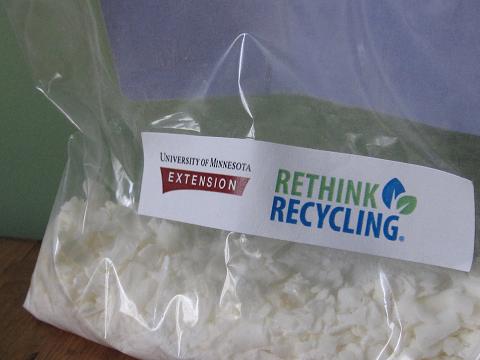
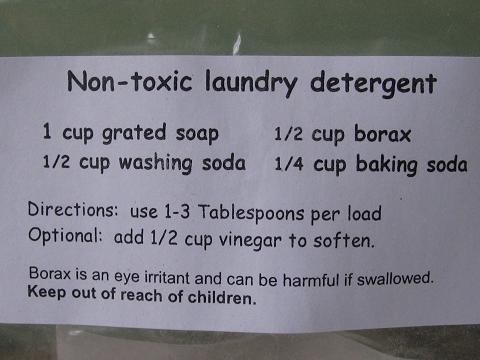
Flash forward to a presentation of the 2011 Community POWER grant recipients where I was giving a report on a residential composting initiative I coordinated. There I heard about one project that set out to debunk the more-toxic-more-suds-the-cleaner hoax and taught residents how to economize while reducing their environmental impact by – for one thing – making their own laundry detergent. I went home with a sample of the detergent and I tried it for the first time last week.
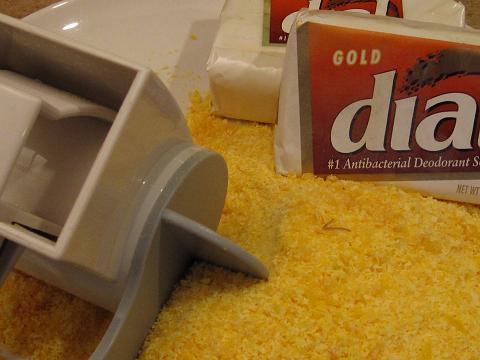
In the load that I did using the sample, there were a few soap flakes that did not dissolve. It wasn’t the end of the world, but certainly not something you can expect the average person to accept. I’m wondering if this can be resolved when I make a new batch of detergent with more finely grated soap. As I recall from the presentation, any bar of soap will do. However, I’ve noticed that other recipes favor Fels-Naptha soap. I’m going to use what I have.
Here are other recipes for laundry detergent you could try:
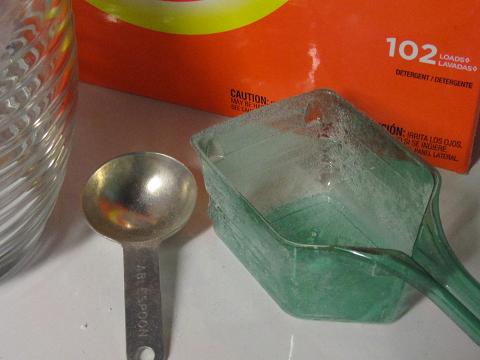
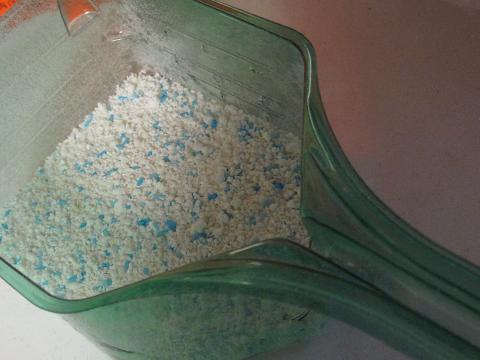
As a bonus, in addition to using less product (1-3 TBS), the powder fits in less space.
One blogger assures us that the lack of suds you’ll notice when using your homebrew is not a problem. She’s right. In the 1960’s marketers pushed suds as a way to tell that the soap was working. Today, we’re warned that too many suds indicate overuse. In addition, high efficiency washers have created a demand for low-suds products again. Marketing fads can be confusing.
Writer Michael Pollan says “Don’t eat what you see on television.” Given the detergent filler Mary Ellen warned me about 20+ years ago and a deceptive suds campaign that added no value but only aimed to distinguish one product from another one just like it, and given the overall advertising tactics that are turning us into neurotic Lysol junkies, I wonder if we shouldn’t apply that rule to all products advertised on television: Don’t buy them.
I think I’ll try it. 2014. Resolve to be Clean.
Links
The Soap Conflict, Thomas WhiteSide, The New Yorker, 1964.
“As the level of detergent suds in the American kitchen approached the stifling point a counter-movement set in. It started with a detergent called All; Procter & Gamble then put out Dash, with ‘low suds’ & ‘safe suds.’ Were suds good or bad?”
Vintage Commercials
Low Suds
https://www.youtube.com/watch?v=F1YTHr4mTQA
https://www.youtube.com/watch?v=vl7V8DGfGpg
https://www.youtube.com/watch?v=lWgIyywz4cg